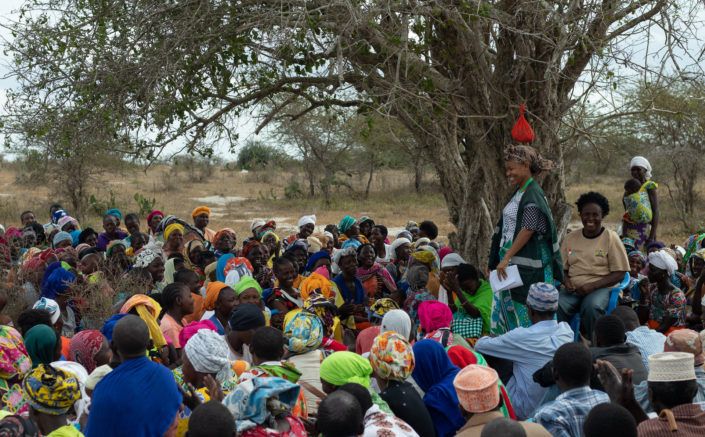Every household in a village receives ~$1,000 with no strings attached
Living below the extreme poverty line means a household is unable to afford their most basic needs of food, shelter, healthcare/sanitation, and education. $1,000 USD is about one year’s expenditure for the average household in poverty in the countries where we work. There is nothing magical about this amount – it reflects both existing evidence on the effectiveness of large transfers and it is roughly the amount the average family in poverty would need to invest in order to raise their income above that extreme poverty level.
This program has delivered $220M+ since 2009
As of March 2023, our large transfer program has reached over 350,000 households in rural villages in Kenya, Liberia, Malawi, Rwanda and Uganda.
We’ve launched other cash transfer programs in Democratic Republic of the Congo, Nigeria, Morocco, Mozambique, and Togo.
We use a four-step payment process to deliver the funds
1. Target
We primarily use government data to target villages where most or all residents are living in extreme poverty, defined by the World Bank as earning under $2.15/day.
2. Enroll
In-country GiveDirectly staff – not contractors – go door-to-door enrolling one member of each household in the entire village. They also hold large meetings to prepare the community for the coming transfers.
3. Pay
About a month later, the funds are sent in two parts through a SMS-enabled banking technology called mobile money. If a household did not already have a mobile phone, we will give them one. They can then withdraw the mobile funds as cash with local agents.
4. Follow-up & audit
We then call each person to verify they received the funds and evaluate their experience with our program. We also provide toll-free call centers to offer support. Our internal audit team follows up with a subset of recipients to identify and investigate potential fraud.
Research shows this money can be transformative
People in poverty are experts on their own lives, and their own needs – what they are missing is money. These large one-time transfers allow them to invest in what they need most and have been shown to improve recipients’ earnings, children’s school attendance, health, nutrition, and mental wellbeing. The chart below summarizes the findings of dozens of studies of cash transfer programs all over the world.
